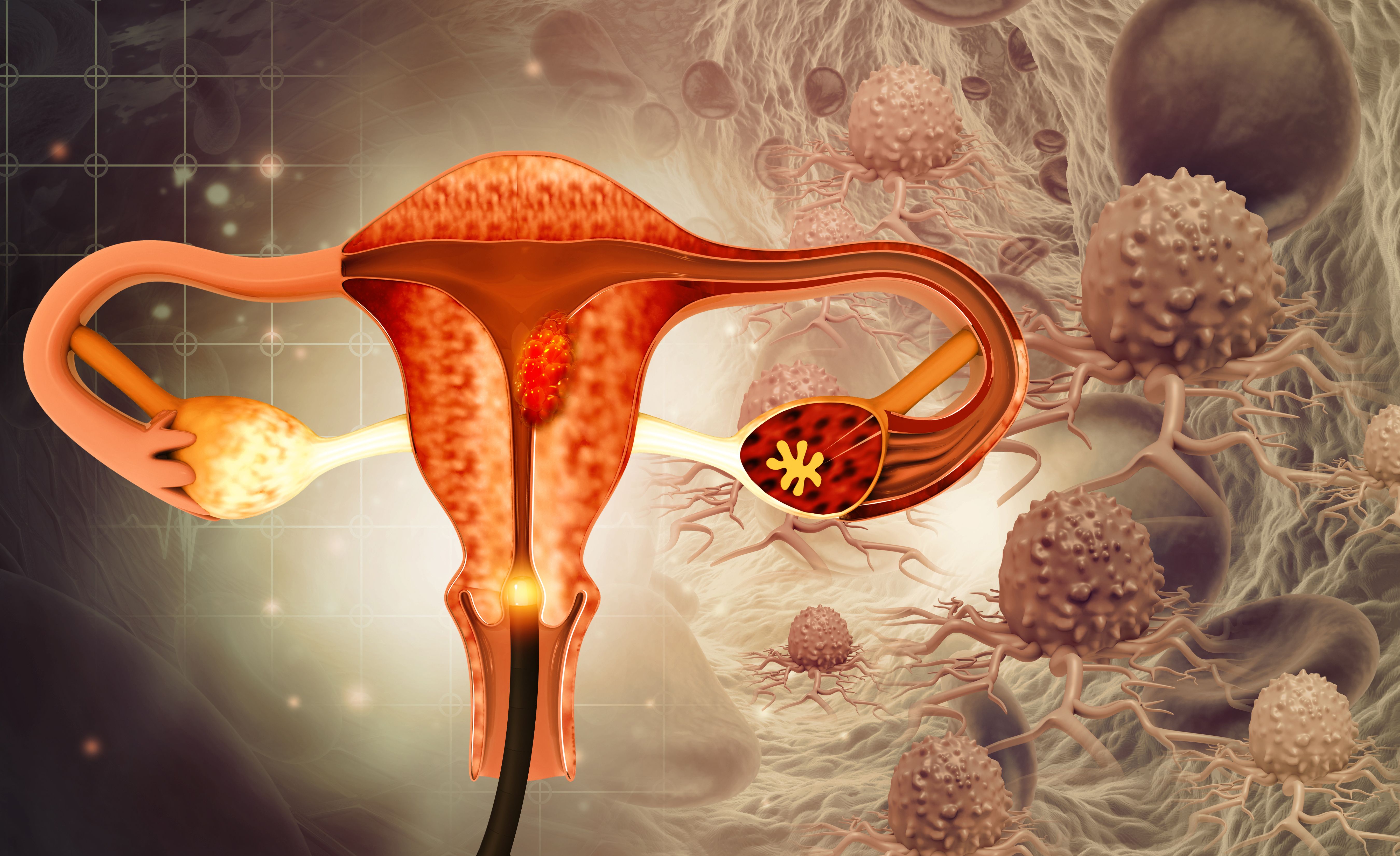Maintenance Olaparib/Cediranib Fails to Extend PFS, OS in Ovarian Cancer
Patients with platinum-sensitive relapsed ovarian cancer given maintenance olaparib/cediranib had similar progression-free and overall survival rates vs those given olaparib alone.
Shibani Nicum, BSc (Hons), MBChB, MRCP, DPhil

In the phase 3 ICON9 study (NCT03278717), maintenance olaparib (Lynparza) given with cediranib did not lead to significantly improved rates of progression-free survival (PFS) or overall survival (OS) compared with olaparib alone in patients with relapsed platinum-sensitive ovarian cancer. Findings were presented at the 2024 ESMO Congress.1
At a median follow-up of 37.0 months, the median PFS was 11.0 months (95% CI, 8.4-12.8) and 13.9 months (95% CI, 11.3-16.1) in the olaparib and olaparib/cediranib arms, respectively (HR = 0.84; 95% CI, 0.65-1.07; P = .24).
“This was not statistically significant,” chief trial investigator Shibani Nicum, BSc (Hons), MBChB, MRCP, DPhil, a consultant medical oncologist and associate professor of Medical Oncology at University College Hospital London, said during a presentation of the data.
ICON9 is an international academic, controlled, randomized phase 3 trial that assessed the efficacy of olaparib and cediranib as maintenance treatment in first platinum-sensitive relapsed ovarian cancer after a prior response to platinum-based treatment.
“In terms of background, the majority of patients who present with advanced ovarian cancer will relapse within 18 to 24 months,” Nicum said. “In platinum-sensitive relapse, the PARP inhibitor olaparib and the VEGF inhibitor cediranib have individually led to improved outcomes.”
Patients with relapsed platinum-sensitive ovarian, fallopian tube, and primary peritoneal cancer were enrolled in the study (n = 330). Key eligibility criteria included having platinum-sensitive recurrence, maximum of 2 prior lines of treatment, complete response or partial response after a minimum of 4 cycles of chemotherapy, BRCA of any kind, and no prior treatment with PARP inhibitors. Patients were stratified based on tumor BRCA status, surgery vs no surgery relapse, prior treatment with bevacizumab (Avastin), progression-free interval of 6 to12 months vs longer than 12 months, and country.
Arm 1 included 167 patients who were treated with oral olaparib at 300 mg twice daily (BD) plus oral cediranib at 20 mg once daily (OD) until disease progression or beyond if clinical benefit is derived. Arm 2 included 170 patients who received 300 mg of oral olaparib BD until disease progression or if clinical benefit was derived.
The primary end point was PFS; secondary end points included OS, toxicity, adherence, quality of life (QoL), cost-effectiveness, further treatment, and response rate.
Gynecologic cancer illustration: © Crystal Light - stock.adobe.com

Baseline characteristics in both treatment arms were balanced: the median ages were 64 years (range, 34-81) and 62 years (range, 34-85) in the olaparib monotherapy and olaparib/cediranib arms, respectively; majority had an ECOG performance status of 0 (56.5% vs 61.1%); majority had a serous histological type of carcinoma (97.0% vs 97.6%); and the majority of patients did not undergo surgery at relapse (85.3% vs 88.6%).
According to the results, at a median follow-up of 37.0 months, the OS in the intention-to-treat (ITT) population did not have a significant difference by any stratification factor, which included BRCA status. The median OS was 37.8 months (95% CI, 26.9-45.0) vs 37.2 months (95% CI, 29.3-44.5) in the olaparib monotherapy and olaparib/cediranib arms, respectively (HR = 0.92; 95% CI, 0.67-1.26; P = .81). By BRCA status, patients with BRCA mutations and wild type BRCA had P values of .60 and .94, respectively.
Regarding safety, the safety profile was generally consistent with expected toxicities from the two agents. Events occurred in 17.6% (n = 30/170) and 19.8% (n = 33/167) of patients from the olaparib monotherapy and olaparib/cediranib arms, respectively. Progressive disease occurred in 82.1% (n = 115) and 76.9% (n = 103) of patients in the respective arms; toxicity occurred in 10.7% (n = 15) and 13.4% (n = 18). The median number of cycles was 8 (range, 0-51) and 11 (range, 0-55), respectively. The most common grade 3 or higher adverse events (AEs) occurring in the olaparib plus cediranib vs olaparib only groups included anemia (23 patients vs 20 patients), hypertension (16 patients vs 4 patients), diarrhea (16 patients vs 3 patients), fatigue (10 patients vs 5 patients), decreased neutrophil count (10 patients vs 4 patients), and abdominal pain (8 patients vs 5 patients).
“To conclude, the improvement in progression or overall survival with maintenance olaparib and cediranib was not statistically significant compared to olaparib alone,” Nicum said. “But it's worth noting that in the olaparib arm, the progression-free survival was better than we had expected at 11 months compared to 8.4 months, and also in terms of overall survival, it was significantly better than anticipated at 37.8 months rather than 29.8 months.”